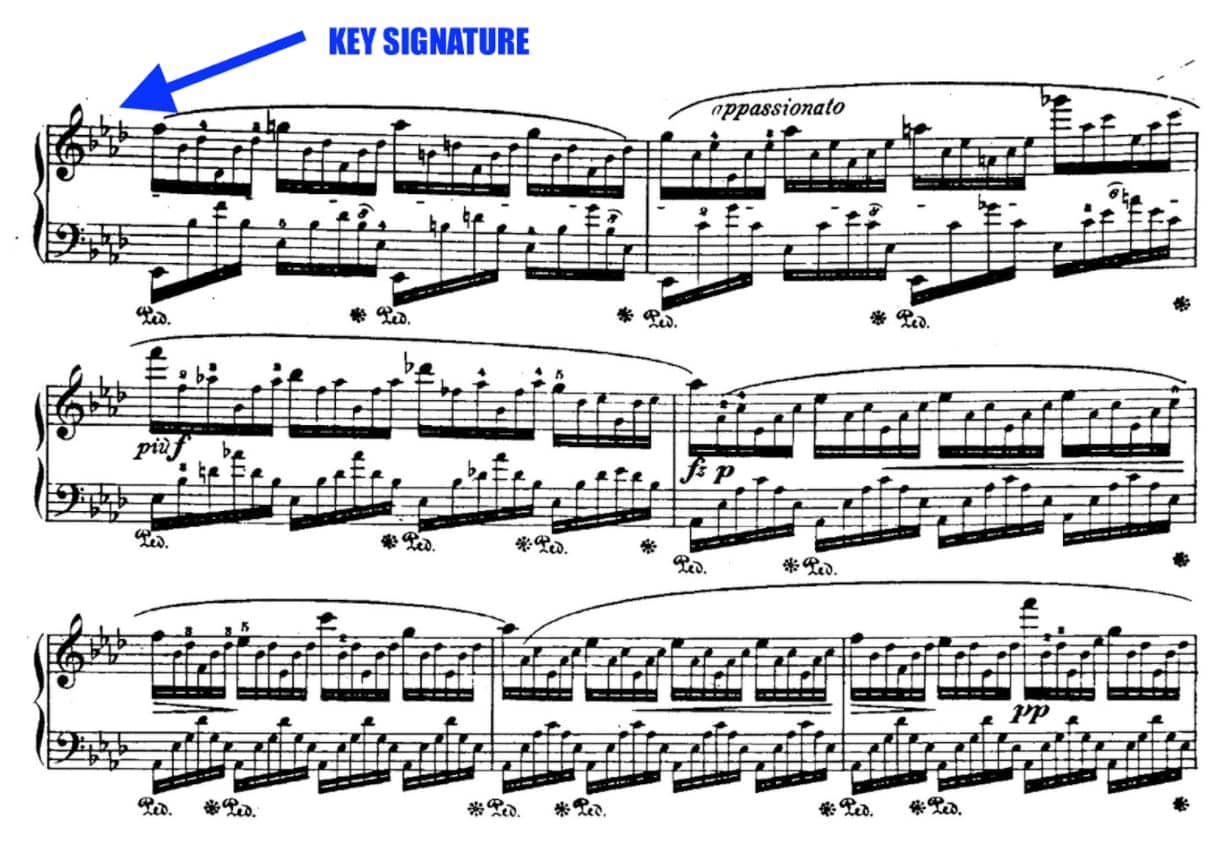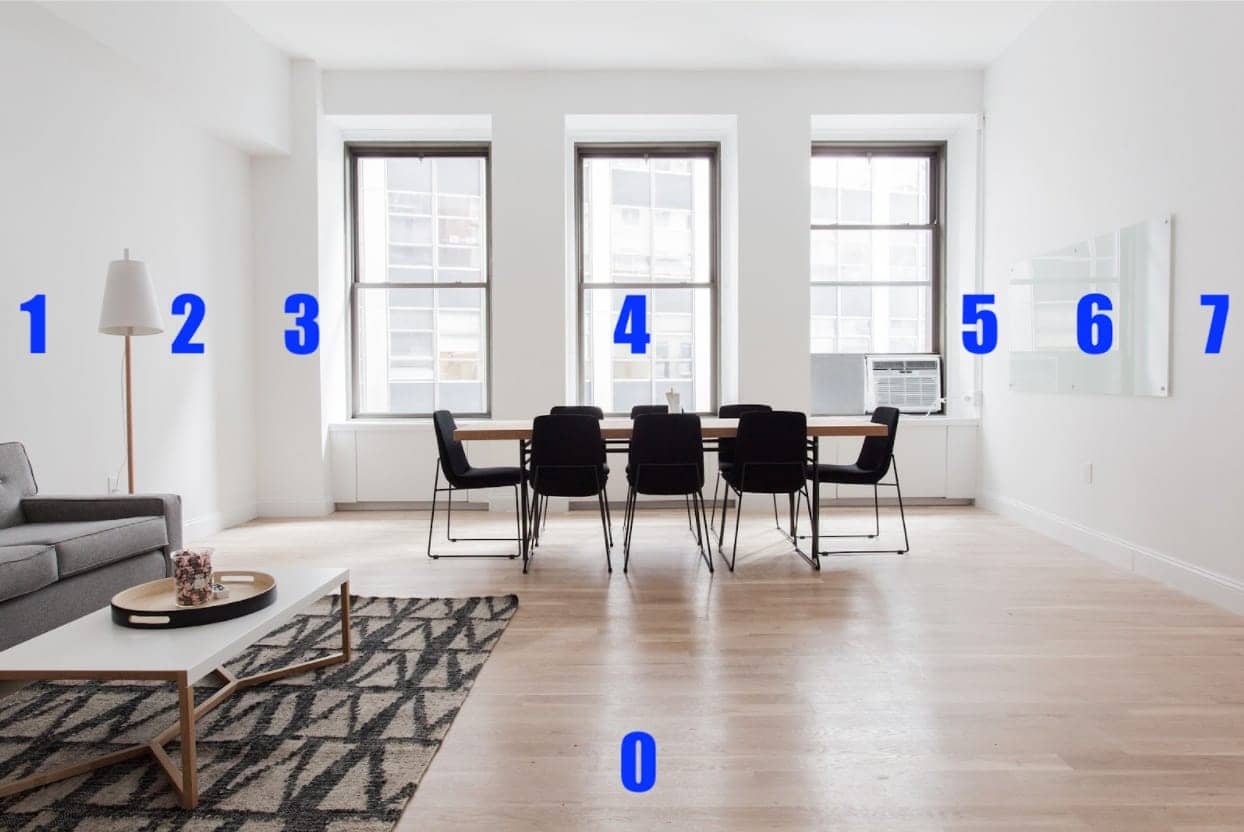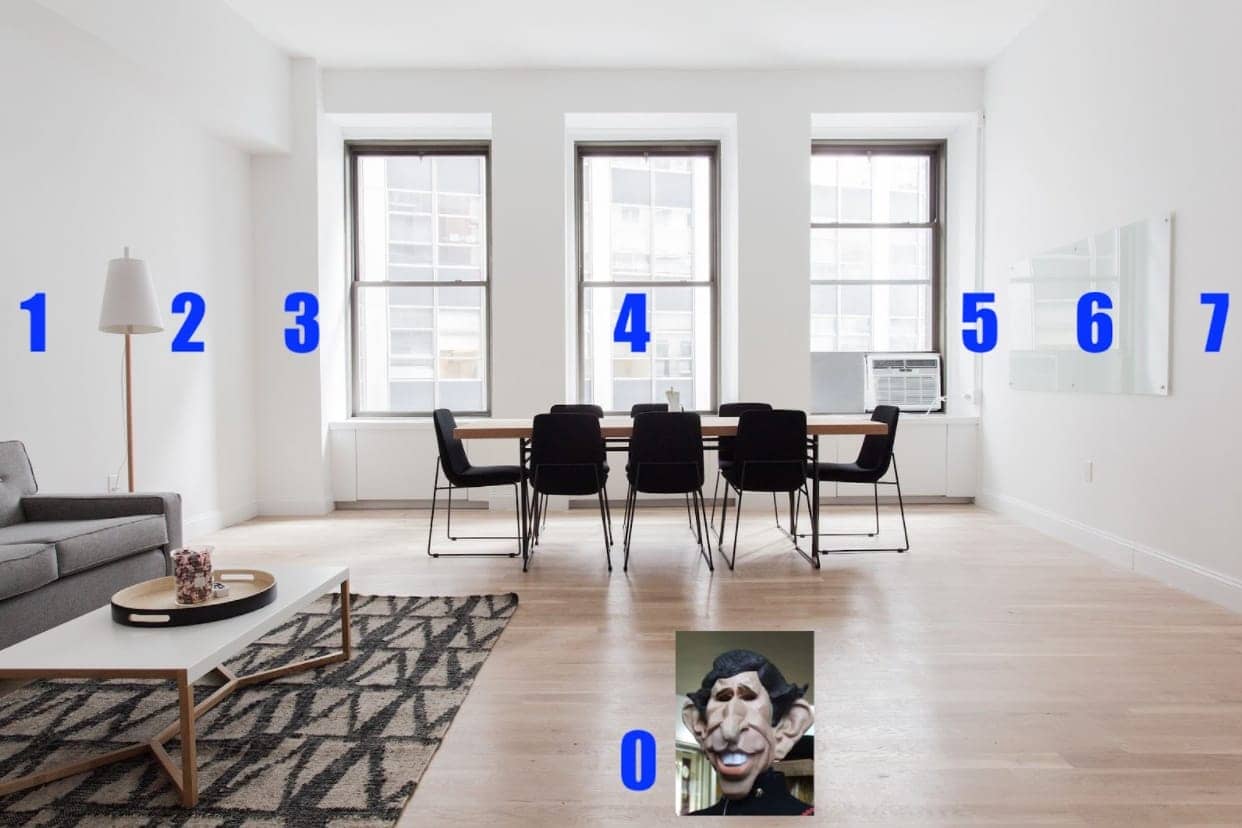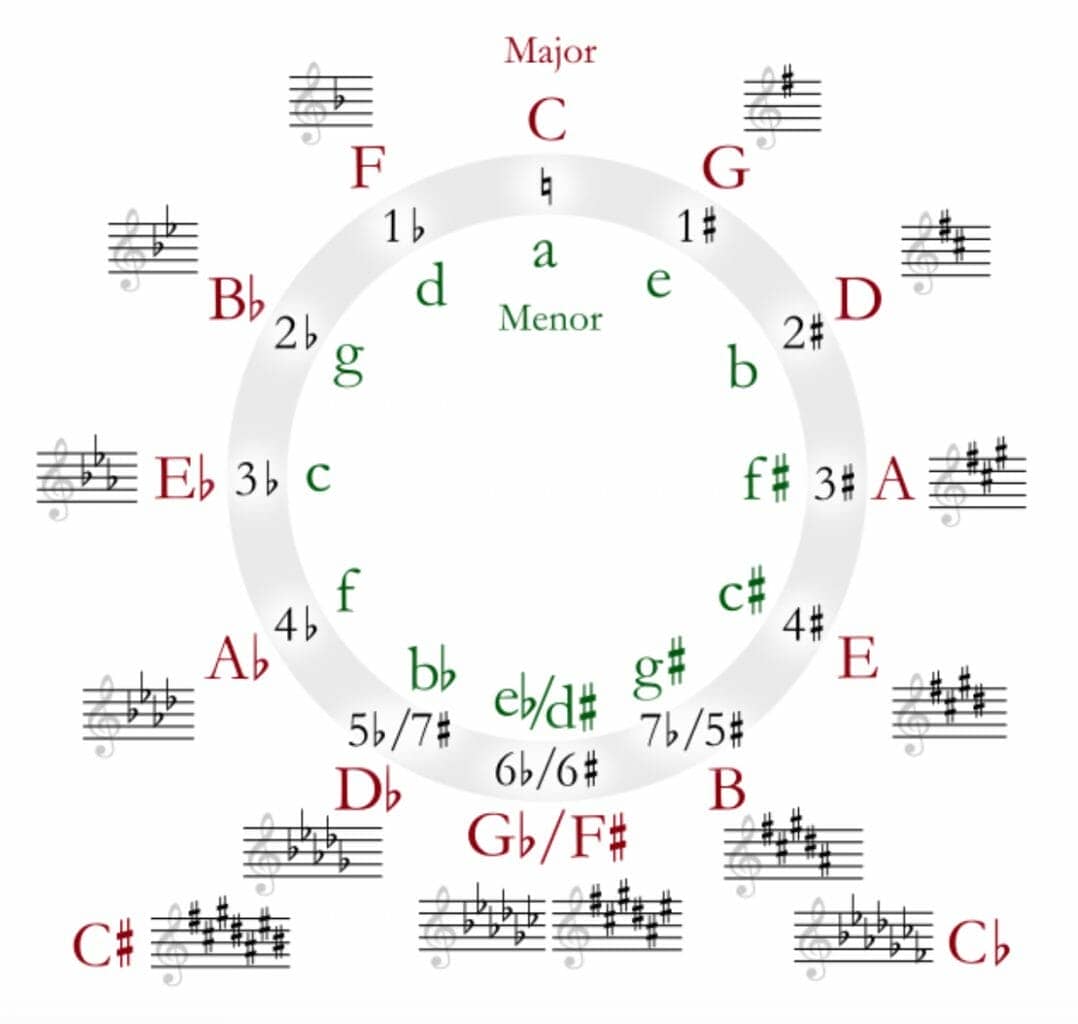
Don’t feel bad if that’s the case.
It’s a ton of information to master and it’s not entirely clear where to start.
But once you have the mnemonic devices you’ll learn on this page, you’ll know how to identify key signatures at a glance.
Ready?
Let’s get started!
How to Remember Key Signatures Fast in 4 Steps
Why does musical notation even use key signatures?
To reduce clutter.
Musicians need to read scores and parts quickly, so the accidentals in the key of a song or composition are placed at the beginning of the piece.
In other words, the key signature alerts the musician of which accidentals are in play.
In case that term is new to you, “accidentals” means sharp, flat and neutral notes that might be sounded in a piece. The topic is interesting and nuanced, so it’s worth learning more about accidentals when you have a moment.
Where will you find the key signature on a sheet of music? Immediately after the clef sign.
Notice that the key signature appears on every staff of the piece. This is true on both music written for the treble clef and the bass clef.
Are there any exceptions to this rule?
Yes, often lead sheets will only show the key signature once, especially when it’s a simple song. It will only be different if the song changes keys at some point.
Now, with all this in mind, how are we going to remember what all those strange marks in the key signature area mean?
Step One: Create Number-Based Locations In a Memory Palace
Essentially, knowing your key signatures helps you know how many sharps or flats will be accidentals in a piece of music.
To rapidly commit this information to memory, a Memory Palace is your best bet. In this case, the approach is inspired by Dean Vaughn and his Vaughn Cube for music theory.
Using it will take a bit of setup, but it will be worth it. You can use it to help you remember many more things about music. And it will help you remember names, foreign language vocabulary, numbers and just about anything you can imagine.
Since there are 8 key signatures for the treble clef and one of them contains no sharps or flats, we need 8 locations in our Memory Palace.
We’ll number these 0-7 to reflect that C Major has no sharps or flats. On the other end, you’ll use the same system to help you remember that C# Major has seven sharps.
To get started, pick a room that you’re familiar with and then mentally mark it out like this:
Step Two: Assign Some Simple Associations
Using the pegword method, we’ll next associate each key with a striking image.
The problem with the Vaughn approach is that he suggests generic associations like “cat” for C. You use this kind of association to help you remember the letter by pairing it with the numbered location.
That’s okay, but I recommend you think of something much more dynamic. For example, Clint Eastwood and Prince Charles are much more striking ways to help you remember C Major.
If you then imagine that Prince Charles is standing in position 0 in your Memory Palace, it’s a no-brainer to remember that C Major has no sharps or flats.
Moving on, G Major has only one sharp.
Rather than use a generic giraffe, George Harrison of The Beatles is bound to be much more memorable.
Here are suggestions for the entire list. Modify them by using the alphabet as your guide as you select your own.
- C Major = Prince Charles (0)
- G Major = George Harrison (1)
- D Major = Dracula (2)
- A Major = Al Pacino (3)
- E Major = Elvis (4)
- B Major = Bruce Willis (5)
- F# Major = Frank Zappa (6)
- C# Major = Clint Eastwood with a sharp knife (7)
Why does Clint Eastwood have a sharp knife on station 7 of this Memory Palace? Because that’s an easy way to remember that this key has 7 sharps.
Once you’ve done this, repeat the process for the bass clef.
Step Three: Revisit Your Associations
The beauty of the Memory Palace technique is that you now have created an easy and fun way to mentally review the key signatures.
To do this, simply bring your Memory Palace to mind. Then:
- On station zero, call up your image and reflect (Prince Charles, no sharps in C)
- On station one, call up your image and reflect (George Harrison, one sharp in G)
- Etc.
How many times do you need to recall each station until your knowledge of the key signatures enters long term memory?
It really depends, but most people who take the 20 minutes or so it takes to set this up should only need 3-5 repetitions.
Step Four: Mentally Compare to the Circle of Fifths
Now that you know your key signatures, it’s helpful to see how this knowledge relates to the circle of fifths.
This circular structure helps us imagine the pitches and their corresponding keys. It is useful for composing, especially when creating chords and melodies.
You’ve already created much of this circle in your Memory Palace. The top of the circle is station 0 in your Memory Palace and moving clockwise, G is station one, etc.
Now, you can relate everything you know about the Major scales to the Minor scales quite easily.
For example, you can relate C Major to A Minor by having Prince Charles wrestling with Al Pacino. In this version, Al Pacino wears a miner’s hat to help you remember that he’s the minor to the major.
Of course, you might be concerned that having Al Pacino in your Memory Palace twice could get confusing. But there are many famous people and fictional characters you could use for every letter. How about Antman as an alternative?
Take Mnemonics For Music One Step at a Time
If you’re new to using mnemonic devices, what you’ve just learned might feel as overwhelming as learning music itself.
Just take it one step at a time.
If you need more help with the Memory Palace and association component, grab my FREE Memory Improvement Kit:
Although it doesn’t refer explicitly to music, I am a musician myself and I use music mnemonics a lot.
One of my favorite episodes of the Magnetic Memory Method podcast is with a student and friend who learned the modes using mnemonics as I teach them.
And if you play guitar, don’t miss how memory techniques can help you learn the fretboard.
So what do you say?
Are you ready to master the key signatures in record time?
Dive in, enjoy this journey and just shout out if you have any questions.
Related Posts
- How to Remember Port and Starboard (From a Memory Expert)
You can permanently remember port vs starboard in a matter of minutes. Learn this simple…
- Nelson Dellis On Remember It! And Visual Memory Techniques
Looking for visual memory techniques? And I mean truly visual. In this episode of the…
- Memory Improvement Fun And Games: Mark Channon Talks About How To Remember Anything
Mark Channon Makes Memory Improvement Fun!









